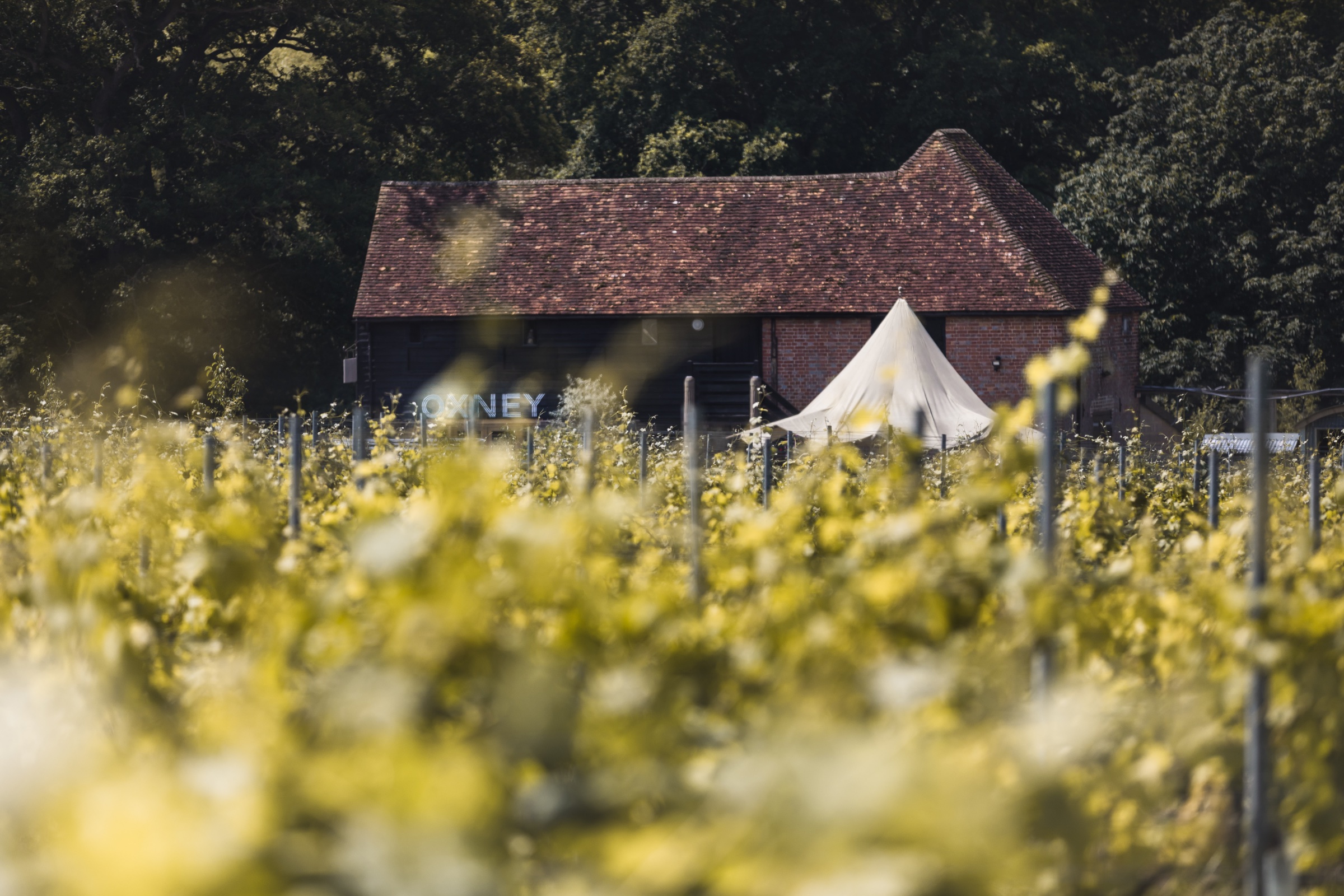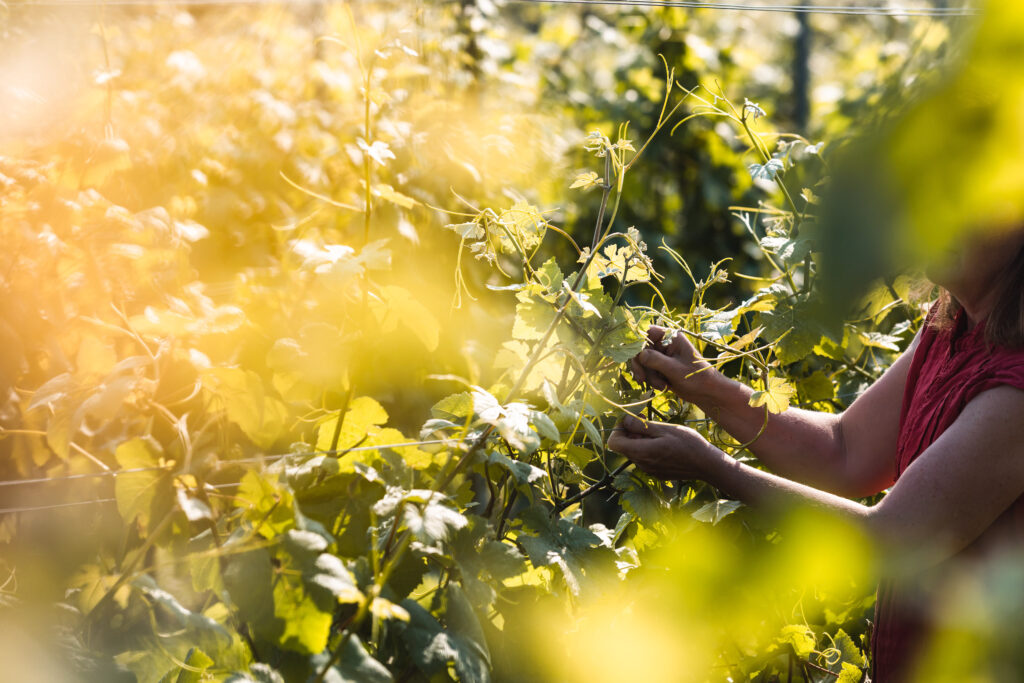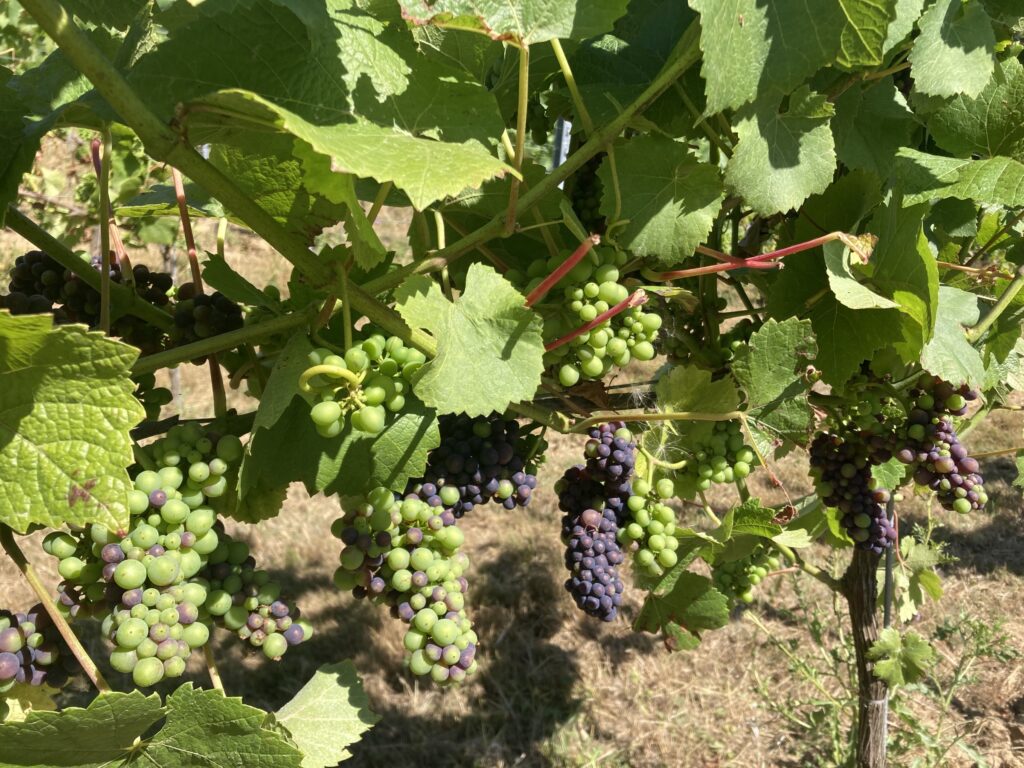August in the vineyard: Canopy management

In our August vineyard dispatch, we look at the role of canopy management in keeping our organic vines on track for a stellar harvest.
Every growing season is different. In England, famously, we cannot predict the weather and our annual cycle of growing grapes is ultimately governed by the one factor we cannot control. So, every year we must draw on our resources to steer our precious organic grapes through the vagaries of sun and rain, heat and chill, wind and calm, time and tide.
This year has been far kinder than most. The sun has shone long and hot, and our vines have responded with a large crop of beautifully healthy grapes, already so far ahead of the ripening curve that we anticipate one of our earliest-ever harvests. Even the recent rains have come at a time when they are far more likely to nourish our roots than damage our canopy and fruit. We have high hopes for the 2022 vintage.
What resources have we had to rely in the vineyard on this summer? Fewer than most years. It has been a pleasant year to grow grapes. the vines have been able to largely do their own thing, with minimal intervention on our part.
The majority of our work has involved canopy management. This is an essential tool in an organic vineyard – our primary natural defence against the disease pressure that conventional vineyards combat with ecologically harmful spraying regimes.
Why do we practise canopy management?
Canopy management works in tune with the natural instincts of our vines. It’s a technique that gently encourages the vine to divert its energies where they’re needed at each critical stage of the growing season, to ensure the grapes reach optimum ripeness at the point of harvest. Crucially, it also opens up the vine to sun and breezes, our natural allies in the battle against the perennial threat of moulds and mildews.
Left to its own devices, a grapevine will prioritise green growth, happily throwing out shoots and leaves and only considering setting fruit when it feels under pressure to reproduce. In this untended ‘free range’ state, our vines would give us at best a microscopic crop of grapes of questionable ripeness and quality every year – they would have expended so much of their energy on green growth that fruiting would be almost an afterthought.
They would also be riddled with disease. Among the bushy, closed canopy of leaves would be a multitude of moist, warm pockets of air where the likes of powdery mildew, downy mildew and botrytis cinerea love to congregate. Even hot English summers are typically humid, meaning these conditions within the canopy are unavoidable from a climatic perspective. Hence, we manage the canopy to mitigate them.
How does canopy management work?
From May onwards, from the moment our vineyard begins to turn green, we carefully tend to our vines to ensure they are in the best condition to grow ripe, healthy grapes. When a riot of new shoots has burst out from the canes, we select the ones we judge will grow best and thin out the rest. This is the first stage in setting the delicate summer-long balance between shoot growth and fruit growth.
Green shoots grow vigorously in rich, nourishing soil like ours, so through May, June and July we’re kept busy tucking them into the trellising – firstly to keep them safe from wind, passing tractors and suchlike, and secondly to ensure a large ‘leaf wall’. This is a vital aid to grape ripening. The carefully planned orientation of our vines means that they catch maximum sunlight (and thus are best primed for photosynthesis) when the leaves are arranged in a high, flat wall within the trellising.
After fruit set, and with further canopy management, this arrangement means the vine will divert its carbohydrate stores into the grapes for the last few weeks of the summer. We’re now well into this phase. Our black grapes have achieved veraison, the point at which the skins turn from green to purple as colour-imbuing anthocyanins develop. Beneath the skin, sugars are accumulating and acidity levels dropping in the swelling pulp. In the run-up to harvest we’ll be testing sugar levels using a refractometer, tracking the readings weekly to determine the right time to pick. As we write, late September looks likeliest.
Time to reflect
August is typically wait-and-see month in the vineyard. The canopy is in check and the vines prepped for their final tilt at ripening. We keep things tidy, continuing to strip leaves away from the fruit zone to circulate air around the grapes, drying off any rain and morning mists, still warding off disease. We keep our eyes on the sky and quietly pray for the sun to keep shining. And our thoughts start to turn in earnest to the winery and the preparations we need to make for it to receive the harvest in a few short weeks.
It’s a rare chance to take a breath and gather our own energies for the busy weeks ahead. After a dismal growing season in 2021, we’re genuinely excited by how things are progressing out there in 2022, for both our still and sparkling wines. It’s a good year to be an organic producer and offer yet more loud refutations of the supposed folly of growing grapes in England without the lazy chemical crutches of conventional viticulture. We continue to spread the word to our welcome flow of weekly visitors, the lucky ones who now get to see the vineyard at its aesthetic and viticultural best.
August has been kind. Here’s to more of the same in September and the rich potential that lies ahead for our 2022 vintage.

